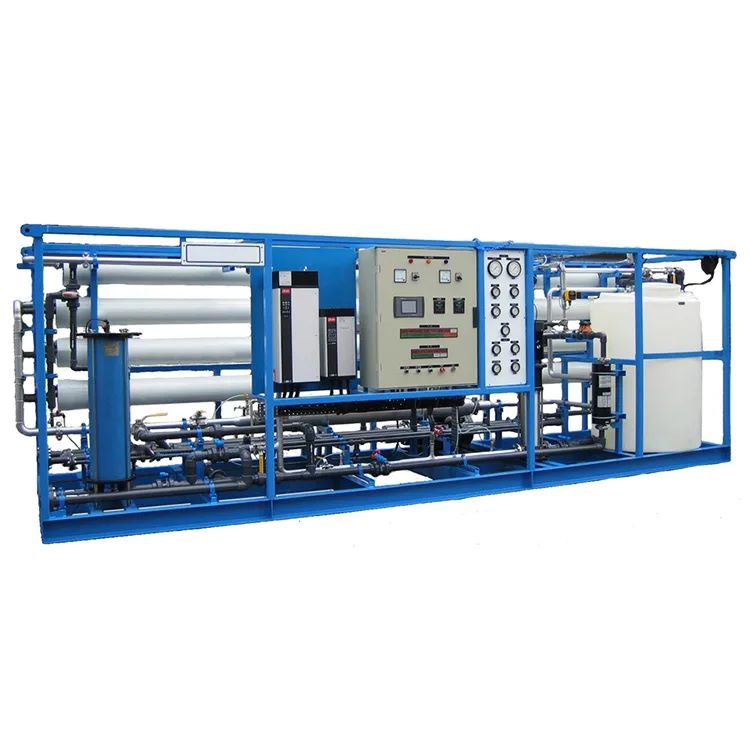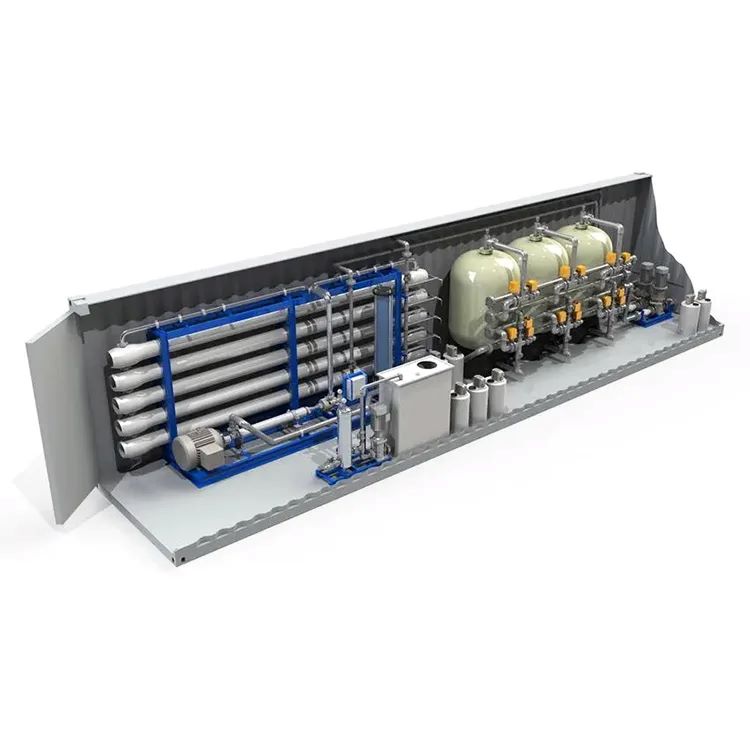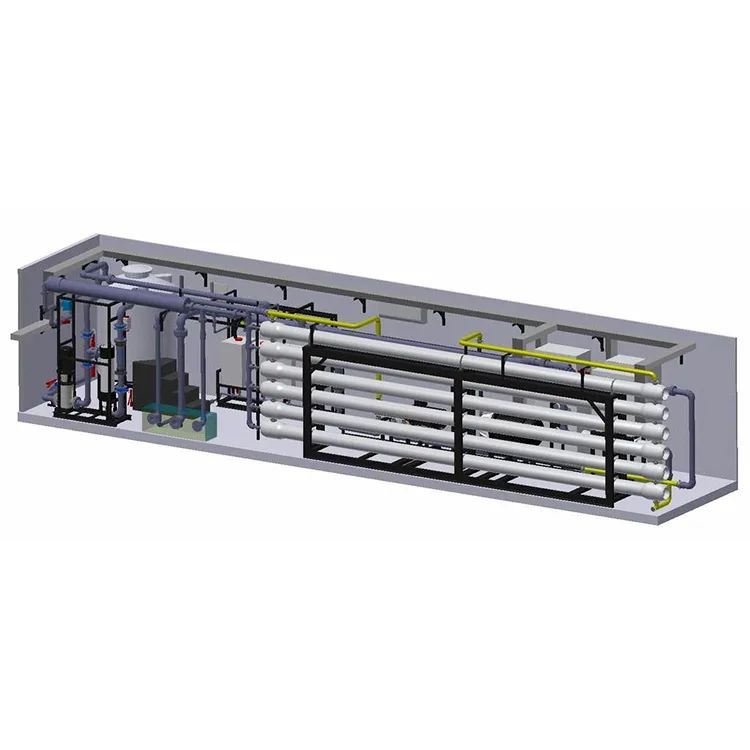RO Desalination Plant: Efficient Water Purification for Coastal Communities
As water scarcity continues to pose a significant challenge for communities around the globe, especially in coastal areas, Reverse Osmosis (RO) desalination plants have emerged as a game-changing solution for water purification. These plants provide a reliable and sustainable source of fresh water by filtering seawater, making it suitable for consumption and other uses. With the rise in demand for fresh water in coastal regions, RO desalination plants offer an efficient and eco-friendly method of addressing this issue. This article highlights RO desalination plants' key features and benefits and explains why they are essential for coastal communities.

1. High-Efficiency Water Purification
Its high-efficiency water purification system is at the heart of any RO desalination plant. Using reverse osmosis, these plants remove salt, minerals, and impurities from seawater, producing potable water that is safe to drink and use for agricultural, industrial, and municipal purposes.
Advanced Filtration: RO desalination works by forcing seawater through a semi-permeable membrane, which filters out impurities and allows only water molecules to pass through. This method effectively removes up to 99% of dissolved salts, along with bacteria, viruses, and other harmful contaminants. This advanced filtration ensures that the resulting water is not only desalinated but also purified to meet drinking water standards.
Effective for Brackish and Seawater: RO plants are designed to handle both brackish water and seawater, which is particularly important for coastal areas with varying salinity levels. Whether it’s seawater with high salt content or brackish water from estuaries, an RO plant can efficiently produce clean water.
Scalable Filtration Capacity: Depending on the needs of the community or industry, RO desalination plants are scalable, from small units supplying water to a few households to large-scale plants providing water for entire cities. This flexibility ensures that even growing communities have access to fresh, purified water.
2. Sustainable Solution to Water Scarcity
Water scarcity is a growing issue for coastal communities, where access to freshwater sources is often limited. RO desalination plants offer a sustainable solution by tapping into an abundant resource—seawater. With oceans covering more than 70% of the Earth’s surface, RO plants provide an almost limitless supply of water.
Dependable Water Source: Unlike freshwater lakes or rivers, which can run dry during droughts, seawater is constantly available. RO desalination ensures that coastal communities can rely on a stable water source, regardless of seasonal variations or environmental changes.
Alleviating Groundwater Stress: Many coastal areas depend on groundwater for drinking water, which can lead to over-extraction and saltwater intrusion. RO desalination helps reduce the demand for groundwater, preserving this critical resource for future generations and preventing environmental degradation.
Reducing the Need for Long-Distance Water Transport: In many regions, water needs to be transported over long distances to reach coastal cities, leading to high energy consumption and logistical challenges. RO desalination eliminates the need for such transport, as water is produced directly at the point of use.
3. Energy-Efficient Technology
One of the key advantages of modern RO desalination plants is their energy efficiency. Although desalination was once known for being energy-intensive, advancements in technology have significantly reduced the power required to operate these plants.
Energy Recovery Systems: Newer RO desalination plants are equipped with energy recovery devices that capture and reuse the energy generated during the desalination process. These systems can recover up to 60% of the energy used, making the entire process more efficient and less costly.
Optimized Pumping Systems: High-efficiency pumps are now a staple in RO desalination plants, ensuring that the seawater is processed using minimal energy. These pumps are designed to operate at optimal pressure levels, reducing energy consumption without compromising the filtration process.
Solar-Powered Desalination: In some regions, RO plants are being powered by solar energy, further enhancing their sustainability. The integration of renewable energy sources not only reduces operational costs but also minimizes the plant's carbon footprint, making it an environmentally friendly solution.
4. Eco-Friendly Waste Management
A common concern with desalination is the disposal of brine—the salty byproduct left after seawater is filtered. Modern RO desalination plants have implemented eco-friendly waste management practices to minimize the environmental impact of brine disposal.
Dilution Techniques: Many plants use dilution methods to reduce the concentration of brine before it is returned to the ocean. By mixing the brine with seawater or treated wastewater, its salinity is lowered to levels that are safe for marine life.
Brine to Resource: Some advanced desalination plants are exploring ways to repurpose brine by extracting valuable minerals such as magnesium and lithium, which are useful in various industries. This reduces waste and turns a byproduct into a resource.
Environmental Monitoring: Most RO desalination plants are subject to strict environmental monitoring and regulations to ensure that their operations do not harm the local ecosystem. This includes careful oversight of brine discharge and the health of surrounding marine environments.
5. Meeting the Needs of Growing Coastal Populations
With urbanization and population growth concentrated in coastal areas, the demand for freshwater is rising at an unprecedented rate. RO desalination plants are perfectly suited to meet the needs of growing populations by providing a continuous supply of water for drinking, irrigation, and industrial processes.
Urban Development Support: As coastal cities expand, so does their need for infrastructure that can support larger populations. RO desalination plants ensure that cities have access to enough clean water to support their growth, without putting pressure on existing freshwater sources.
Support for Agriculture and Industry: In addition to municipal water needs, desalination plants can support local agriculture and industries that require large amounts of water for their operations. This is particularly important for regions where agriculture plays a vital role in the local economy but faces challenges due to limited water availability.
Disaster Resilience: Coastal communities are often at risk from natural disasters like hurricanes and tsunamis, which can damage freshwater supplies. RO desalination plants provide a resilient backup water source in the event of such disasters, ensuring that affected communities can continue to access safe drinking water during recovery efforts.
6. Low Maintenance and Cost-Effective Operation
RO desalination plants are designed for low maintenance and cost-effective operation, making them an attractive option for communities and industries looking for long-term water solutions. Thanks to advancements in technology, these plants require minimal upkeep and are becoming increasingly affordable to build and operate.
Automated Systems: Many RO plants now feature automated monitoring systems that track performance and detect potential issues before they become problems. This reduces the need for manual intervention and ensures that the plant operates efficiently at all times.
Cost Savings Over Time: While the initial investment in building an RO desalination plant can be significant, the long-term savings from reduced reliance on external water sources, coupled with low maintenance costs, make these plants a cost-effective solution in the long run.
Conclusion: A Lifeline for Coastal Communities
RO desalination plants are more than just a solution to water scarcity—they are a lifeline for coastal communities. By providing a reliable, sustainable, and efficient source of freshwater, these plants address the pressing challenges of population growth, climate change, and limited natural resources. Their combination of high-efficiency purification, energy-saving technology, and environmental responsibility makes them the ideal solution for any region that needs to secure its water future.
As more coastal communities face the realities of water shortages, RO desalination plants will continue to play a crucial role in ensuring access to clean, safe water for generations to come.









